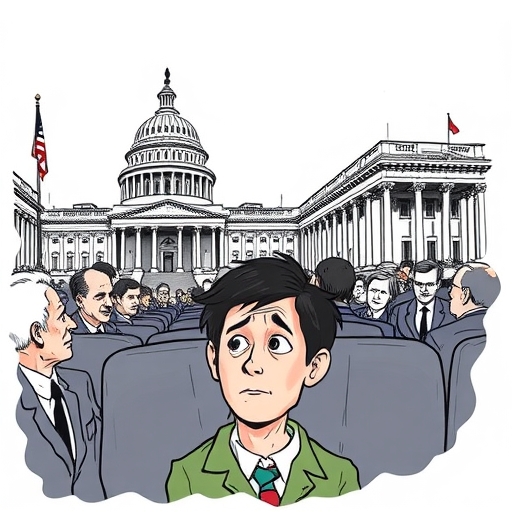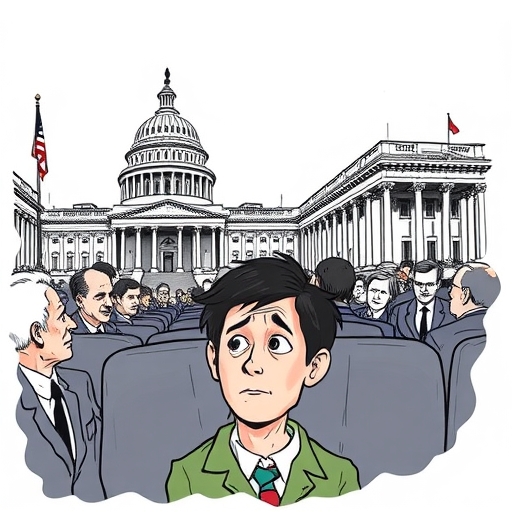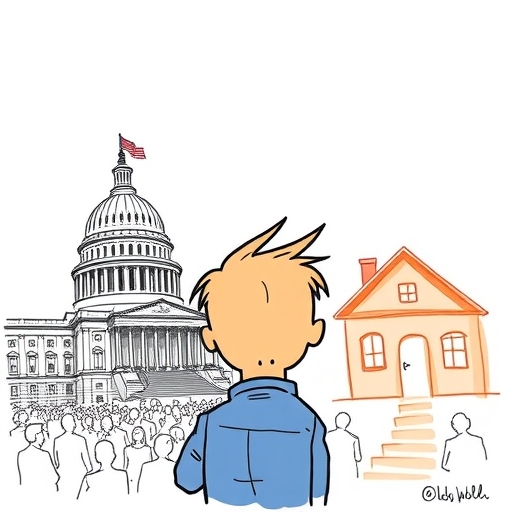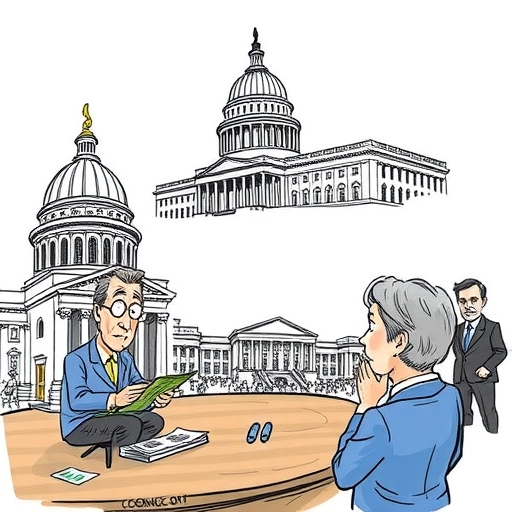
Why Does the Debt Ceiling Matter: Understanding Its Impact on the Economy and Your Finances
Table of Contents
ToggleDecoding the Debt Ceiling: Why This Political Debate Has Real Economic Consequences
Welcome. We’re here to explore a topic that often dominates headlines but can feel shrouded in complexity: the U.S. debt ceiling. You might have heard about it during moments of political tension in Washington D.C., often described as a high-stakes game of chicken between Congress and the White House. But what exactly is the debt ceiling, why does it matter so much, and what could happen if lawmakers fail to address it? Let’s break it down together, step by step.
For anyone navigating the financial markets or simply trying to understand the forces that shape the economy, grasping the implications of the debt ceiling is crucial. It’s more than just political theater; it’s a legislative mechanism with the power to impact everything from global market stability to the interest rate on your next mortgage.
The debt ceiling has implications for:
- Government operations and services.
- Global economic stability.
- Individual financial costs.
What Exactly is the Debt Ceiling?
Think of the U.S. debt ceiling, or debt limit, as a kind of credit card limit for the federal government. It’s a statutory cap set by Congress on the total amount of money the U.S. government is authorized to borrow to meet its existing legal obligations. These obligations are vast and include things like paying Social Security and Medicare benefits, funding the military, paying interest on the national debt, issuing tax refunds, and covering salaries for federal employees.
It’s important to understand what the debt ceiling is not. It does not authorize new spending. The spending itself has already been approved by Congress through various appropriations bills and other legislation. Raising or suspending the debt ceiling simply allows the Treasury Department to borrow the money needed to pay for the spending decisions that Congress and the President have already made.
The concept originated back in 1917 during World War I, when Congress wanted to give the Treasury more flexibility in issuing war bonds without needing specific approval for each issuance. Before that, Congress had to approve almost every instance of government borrowing. The move to a aggregate limit was initially intended to make borrowing more efficient, not to be a recurring point of political crisis.
Over the decades, as the U.S. government grew and its spending increased (driven by wars, recessions, and expansion of social programs), the debt limit was raised or suspended routinely, often with little fanfare. Since 1960 alone, Congress has acted to raise, temporarily extend, or revise the definition of the debt limit 78 separate times – 49 times under Republican presidents and 29 times under Democratic presidents. Historically, it was seen as a necessary administrative step to ensure the government could pay its bills.
| Year | Instances of Debt Limit Action | Presidential Party |
|---|---|---|
| 1960 – 2022 | 78 | Republican & Democratic Presidents |
From Routine Adjustment to Political Football
So, how did a seemingly administrative process transform into a recurring, high-stakes political showdown? This shift is relatively recent, gaining prominence in the 1990s and becoming particularly intense in the last decade or so, notably in 2011 and 2013.
Instead of being a simple vote to allow the government to pay its already-approved bills, the debt ceiling has become a powerful piece of leverage in budget negotiations. One political party, often when opposing the President’s party, will refuse to vote to raise the limit unless their demands are met, typically related to spending cuts or specific policy changes. It’s become a vehicle for forcing fiscal austerity debates, even though the vote itself doesn’t change future spending, only allows payment for past and current commitments.
This strategic use of the debt ceiling introduces significant uncertainty. Lawmakers pushing for spending cuts argue that a refusal to raise the limit is necessary to force fiscal responsibility. Opponents argue that using the debt ceiling this way is akin to holding the global economy hostage, risking catastrophic consequences to achieve unrelated political goals. This divergence of views is what creates the standoffs we see today.
Think of it like this: you’ve already racked up charges on your credit card for groceries, rent, and utilities (the approved government spending). The debt ceiling is the limit on your card. Refusing to raise the limit isn’t deciding not to buy groceries next month; it’s refusing to allow yourself to borrow more to pay the bill for the groceries you’ve already eaten and the rent for the month you’ve already lived. It forces a potentially devastating situation where bills cannot be paid.
The Dire Scenario: What if the U.S. Actually Defaults?
This is the nightmare scenario, the outcome everyone hopes to avoid. The United States has never defaulted on its debt. Its Treasury securities are considered among the safest investments in the world because they are backed by the “full faith and credit” of the U.S. government. A default would mean the U.S. government is unable to make timely payments on its debt obligations – specifically, paying interest or principal on Treasury bonds.
The consequences of such an unprecedented event would be catastrophic, not just for the U.S. but for the entire global economy. Why? Because U.S. Treasury bonds are the bedrock of the global financial system. They are held by central banks, foreign governments, corporations, pension funds, and individual investors worldwide as a safe store of value and a crucial part of financial architecture.
Here’s a breakdown of the likely repercussions:
- Global Market Collapse: The immediate reaction would likely be panic in financial markets. Stocks would plummet worldwide, bonds would become volatile, and the concept of a “safe asset” would be fundamentally questioned. Imagine a major earthquake hitting the very foundation of the global financial building.
- Skyrocketing Interest Rates: If the U.S. defaults, the perceived risk of lending money to the U.S. government would dramatically increase. Investors would demand much higher interest rates (yields) to compensate for this risk. This would make it vastly more expensive for the government to borrow money in the future, adding trillions to the national debt over time.
- Credit Rating Downgrade: Major credit rating agencies like Standard & Poor’s, Moody’s, and Fitch would almost certainly downgrade the U.S. government’s credit rating, perhaps multiple notches. This would send another shockwave, signaling to the world that the U.S. is no longer a pristine borrower. S&P briefly downgraded the U.S. rating in 2011 even though a default was avoided, simply due to the political brinkmanship. A full default would be far worse.
- Credit Crunch: The increase in government borrowing costs would spill over into the rest of the economy. Interest rates for businesses and consumers – mortgages, car loans, credit cards – would soar. This would severely contract economic activity, likely triggering a deep recession.
- Loss of Global Standing: The U.S. dollar is the world’s reserve currency, partly because of the perceived safety of U.S. debt. A default would damage trust in the dollar and could accelerate a shift towards other currencies or assets, diminishing U.S. economic and geopolitical influence.
Experts across the political spectrum and from major financial institutions agree on the severity of this outcome. Jamie Dimon, CEO of JPMorgan Chase, has called failing to raise the debt ceiling a “potentially catastrophic event.” The consensus is clear: default is not a viable option; it is an economic precipice.
Impact on Government Obligations: Who Gets Paid (or Doesn’t)?
Beyond defaulting on Treasury bonds, failing to raise the debt ceiling means the government would eventually run out of cash to pay its other bills as they come due. The Treasury Department prioritizes payments, but faced with insufficient funds, difficult choices would have to be made about which obligations to fulfill.
While bond payments might be prioritized initially to avoid a technical default on debt, it’s likely that payments for critical government functions and services would eventually be delayed or missed. This isn’t a theoretical problem; it impacts real people and vital services. Consider the following:
- Social Security Benefits: Millions of retirees, disabled individuals, and survivors rely on these monthly payments. Delays could cause severe financial hardship for vulnerable populations.
- Military Salaries: Active duty military personnel depend on their paychecks. Missing these payments could have significant morale and readiness implications.
- Veterans Benefits: Payments for healthcare, disability, and education for veterans could be disrupted.
- Medicare and Medicaid Payments: Healthcare providers and insurers could face delays in receiving payments, potentially impacting patient care.
- Federal Employee Salaries: Millions of government workers could face furloughs or delayed paychecks.
- Tax Refunds: Issuance of tax refunds could be halted.
- Essential Services: Funding for various government operations, from food safety inspections to air traffic control, could be jeopardized.
The exact order and extent of disruptions are unclear, as the Treasury would be in uncharted territory. However, the sheer volume of daily obligations (tens of billions of dollars) means that cash would deplete rapidly once “extraordinary measures” are exhausted. The result would be widespread economic disruption and personal hardship for millions of Americans who depend on these payments.
Market Jitters: The Impact of Just Getting Close
Even without a full default, the mere approach of the deadline to raise the debt ceiling – often referred to as the “X-Date”, the day the Treasury is projected to run out of cash without new borrowing authority – can cause significant market volatility and economic damage. We’ve seen this movie before.
The 2011 debt ceiling crisis is a prime example. As the deadline loomed, financial markets became increasingly nervous. The S&P 500 index dropped by about 17% in the summer of 2011, partly driven by the uncertainty surrounding the debt ceiling debate. Treasury yields on short-term debt spiked as investors became wary of even the slightest risk of delayed payment. Money-market mutual funds, typically considered ultra-safe, reduced their holdings of U.S. Treasury debt and shifted towards other assets, a clear sign of shaken confidence.
This near-miss scenario demonstrated that political brinkmanship around the debt ceiling has real economic costs. It creates uncertainty that disrupts normal market functioning, increases borrowing costs (even temporarily) for the government, and rattles investor confidence. Businesses may delay investment decisions, hiring could slow down, and consumer confidence can be negatively impacted by the constant stream of alarming headlines.
The “X-Date” itself is difficult to predict precisely because it depends on the unpredictable flow of government revenues and expenditures. However, as the estimated date approaches, market anxiety intensifies. This forces policymakers into a corner, increasing pressure to reach a deal, but often only after significant volatility has already occurred.
The Current Fiscal Landscape: Accelerating Debt and the Next X-Date
Understanding the current context requires looking at the recent trajectory of the national debt. The U.S. national debt has grown significantly over the past few years, exceeding $36 trillion today. This increase is a result of cumulative budget deficits, exacerbated by factors like the COVID-19 pandemic relief spending, increased entitlement costs, and rising interest payments on the existing debt.
The previous debt ceiling suspension, enacted in 2023, is set to expire on January 1, 2025. At that point, the debt ceiling will be reinstated at a level reflecting the total amount borrowed up to that date. From January 1st onward, the Treasury Department will only be able to use “extraordinary measures” – accounting maneuvers like suspending investments in certain government pension funds – to continue paying the government’s bills without exceeding the new limit.
These extraordinary measures can buy time, but they are not a long-term solution. Eventually, the Treasury will exhaust these measures and run out of cash. This is the dreaded “X-Date.” Based on current spending and revenue projections, estimates vary, but many analysts predict the “X-Date” could arrive sometime in the Summer or August of 2025 if the debt ceiling is not raised or suspended before then.
The sheer scale of recent borrowing means that the required increase or suspension of the debt limit will be substantial. Reports indicate that a figure around a $5 trillion increase might be necessary to provide sufficient borrowing authority for the foreseeable future, perhaps through the end of the next presidential term. This large number reflects the persistent gap between government spending and revenue, a gap projected to widen further, partly due to factors like the potential extension of tax breaks enacted in previous years.
Expert Insights on the Debt Trajectory
Financial leaders and economic experts have increasingly voiced concerns not just about the debt ceiling standoffs themselves, but about the underlying trajectory of the national debt. While the debt ceiling is about paying existing bills, the need to repeatedly raise it is a symptom of the nation’s ongoing fiscal challenges – consistently spending more than it takes in.
Prominent figures like Jamie Dimon and Ray Dalio have warned that the accelerating pace of debt accumulation poses a long-term risk. Their concern is that at some point, the sheer volume of U.S. government debt, coupled with rising interest rates (driven by factors like inflation and central bank policy), could strain the bond market. Increased supply of debt combined with potentially weaker demand from investors worried about fiscal sustainability could lead to a sharp increase in Treasury yields.
As Thomas Simons, a senior economist at Jefferies, has noted, high deficits require more borrowing, which means more Treasury issuance. If there isn’t enough demand from buyers (domestic or international) to absorb this issuance at reasonable interest rates, then rates will naturally rise. This would make it even more expensive for the government to service its debt, creating a feedback loop where deficits increase due to higher interest payments, requiring even more borrowing.
Shai Akabas of the Bipartisan Policy Center points out that while the debt ceiling is an artificial constraint, the need to confront it regularly forces a conversation about deficits and debt. However, using it as a crisis point for negotiation is a dangerous way to have that conversation. Experts advocate for structural reforms to address the deficit problem directly, rather than relying on debt ceiling showdowns.
These expert warnings underscore that the debt ceiling debate, while immediately focused on the ability to pay bills, is intrinsically linked to the larger, ongoing challenge of managing the nation’s finances in a sustainable way. The path of growing debt is not without long-term risks for economic stability.
How the Debt Ceiling Debate Could Affect Your Finances
You might be thinking, “Okay, this all sounds like big-picture government and Wall Street stuff, but how does it actually impact *my* personal finances?” That’s a very important question, and the connection, while not always immediate, is significant.
Firstly, consider borrowing costs. As we discussed, if the debt ceiling standoff causes volatility in the bond market and pushes up Treasury yields (even temporarily), this tends to ripple through the entire credit market. Interest rates on everything from mortgages, auto loans, and student loans to credit cards are influenced by government borrowing costs. Higher Treasury yields mean higher costs for banks and lenders, which they pass on to you, the borrower. So, a crisis that drives up government borrowing costs can literally make it more expensive for you to buy a house or a car.
Secondly, while a full default is unlikely, the possibility of delayed federal payments in a prolonged “X-Date” scenario could directly impact individuals. If you or a family member receive Social Security benefits, veterans benefits, or are a federal employee, there is a risk, however small, that your payments could be delayed. While historically these payments have been prioritized, the operational challenges of picking and choosing which bills to pay when funds are insufficient are immense.
Thirdly, the potential for market volatility cannot be ignored by investors. As seen in 2011, debt ceiling crises can trigger significant drops in the stock market. If you have investments in retirement accounts or brokerage accounts, their value could be negatively affected. While markets often recover after a resolution, the short-term losses can be unnerving and impactful, especially if you are close to retirement or need to access funds.
Think of it like this: the government’s borrowing is part of the plumbing of the national and global economy. When that plumbing is stressed or appears about to break, it creates pressure elsewhere in the system, and those pressures can eventually reach your wallet through higher borrowing costs, potential disruptions to payments, and market instability.
Beyond the Brink: Historical Precedents and Resolutions
Examining past debt ceiling impasses can provide insight, though each situation has unique political dynamics. The 2011 crisis is the most cited recent example of significant market reaction. That standoff was resolved just days before the projected X-Date, leading to the Budget Control Act of 2011, which implemented automatic spending cuts (sequestration) in exchange for raising the debt limit.
The 2013 standoff, while also causing market jitters, was tied to efforts to repeal the Affordable Care Act and led to a 16-day government shutdown because Congress failed to pass appropriations bills, not directly because the debt ceiling was breached. However, the debt limit was also part of the negotiation, ultimately resulting in a temporary suspension.
More recently, in 2023, a contentious negotiation between the Biden administration and House Republicans led by Speaker Kevin McCarthy resulted in the Fiscal Responsibility Act of 2023. This deal suspended the debt ceiling until January 1, 2025, in exchange for caps on government spending for the next two years and some changes to federal work requirements for certain benefit programs. This avoided the immediate crisis but kicked the can down the road to early 2025.
| Year | Event | Outcome |
|---|---|---|
| 2011 | Budget Control Act Pass | Automatic spending cuts initiated |
| 2013 | Government shutdown | Temporary suspension of debt limit achieved |
| 2023 | Fiscal Responsibility Act Passed | Debt ceiling suspended until January 1, 2025 |
These historical examples highlight that resolutions are typically reached through last-minute political compromises. They also show that the concessions demanded in exchange for raising the debt limit can vary widely, reflecting the political priorities of the party using the debt ceiling as leverage. The recurring pattern is that the U.S. comes close to the brink, experiences some level of economic or market stress, and ultimately acts to avoid a default, but often with policy riders attached.
The Road Ahead: Potential Solutions and the Broader Fiscal Challenge
Given the recurring nature and potential dangers of debt ceiling standoffs, discussions occasionally surface about alternative approaches or eliminating the limit altogether. Some economists and policymakers argue that the debt ceiling is an archaic mechanism that serves no useful purpose in controlling spending (since spending is authorized separately) and only creates unnecessary risk. They propose simply repealing it or empowering the Treasury to raise the limit automatically unless Congress passes a resolution of disapproval (which would require a supermajority to overcome a presidential veto).
However, such proposals face significant political hurdles. Many lawmakers view the debt ceiling, despite its risks, as the only effective tool they have to force a conversation about the national debt and potentially extract concessions on spending. As long as there is a political will to use it as leverage, the debt ceiling is likely to remain a feature of the U.S. fiscal landscape.
Ultimately, the need to confront the debt ceiling repeatedly is a symptom of a larger, underlying issue: the long-term imbalance between federal spending and revenue. Addressing this requires difficult policy choices about taxation, entitlement programs (like Social Security and Medicare, whose costs are rising as the population ages), and discretionary spending.
While the debt ceiling negotiation forces a temporary focus on fiscal matters, sustainable fiscal health requires a more consistent, long-term approach. This involves making choices today that impact the debt trajectory years and decades into the future, rather than relying on crisis-driven negotiations at the borrowing limit.
Conclusion: Understanding the Stakes
The U.S. debt ceiling is far more than just an accounting formality. It’s a legal constraint with deep historical roots that has evolved into a potent, and potentially dangerous, tool in political negotiations. While the immediate debate centers on the government’s ability to pay its already-approved bills, the underlying pressures come from the nation’s growing national debt, fueled by persistent deficits.
The potential consequences of failing to raise or suspend the debt ceiling are severe, ranging from unprecedented global economic shockwaves caused by a U.S. default to disruptions in critical government payments and significant volatility in financial markets. Even nearing the deadline carries economic costs, impacting borrowing costs and investor confidence.
For you, whether you are an investor, a trader, or simply someone navigating the economy, understanding the dynamics and risks associated with the debt ceiling is essential. It’s a reminder that macro-level political and fiscal decisions can and do translate into real-world impacts on markets, interest rates, and even personal financial security.
As we look ahead, the debt ceiling is likely to remain a point of tension until broader, long-term solutions are found for the nation’s fiscal challenges. Staying informed about this issue is crucial for making informed decisions in an increasingly interconnected financial world.



why does the debt ceiling matterFAQ
Q:What is the debt ceiling?
A:The debt ceiling is a cap set by Congress on the amount of money the government can borrow to meet its existing obligations.
Q:How does the debt ceiling affect individual finances?
A:Increased borrowing costs due to debt ceiling standoffs can lead to higher interest rates on loans, affecting mortgages, car loans, and credit cards.
Q:What happens if the debt ceiling is not raised?
A:If the debt ceiling is not raised, it can lead to a government default, causing disruptions to payments and severe economic consequences.
You may also like
Calendar
| 一 | 二 | 三 | 四 | 五 | 六 | 日 |
|---|---|---|---|---|---|---|
| 1 | 2 | 3 | 4 | 5 | 6 | 7 |
| 8 | 9 | 10 | 11 | 12 | 13 | 14 |
| 15 | 16 | 17 | 18 | 19 | 20 | 21 |
| 22 | 23 | 24 | 25 | 26 | 27 | 28 |
| 29 | 30 | 31 | ||||
發佈留言
很抱歉,必須登入網站才能發佈留言。